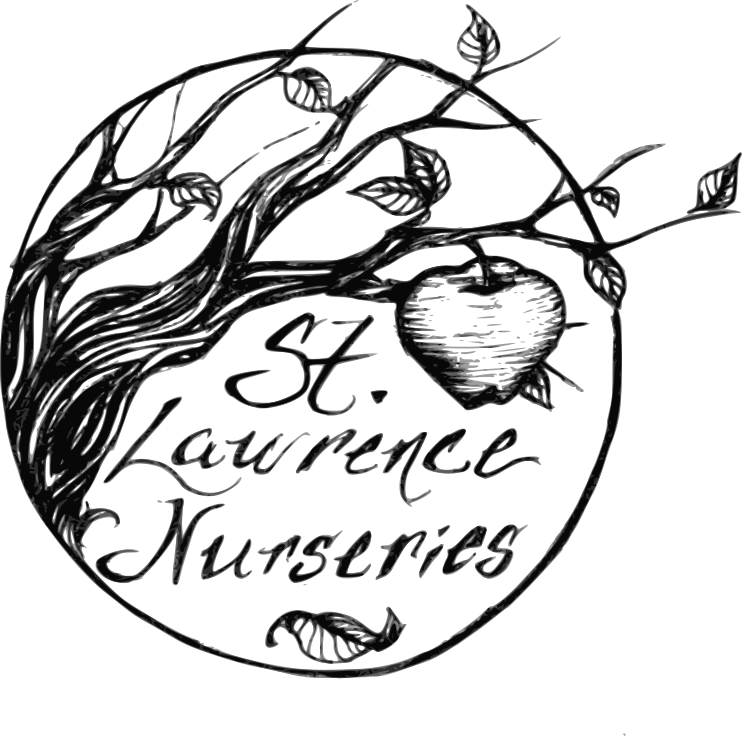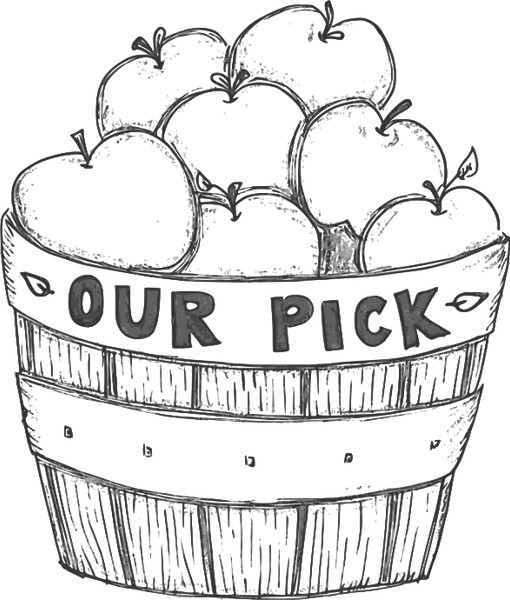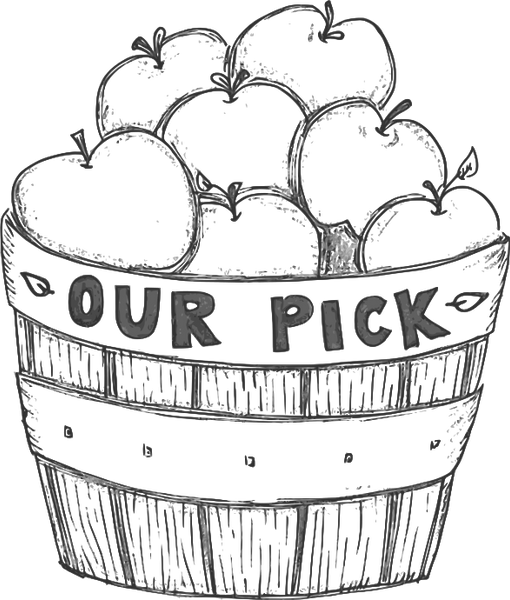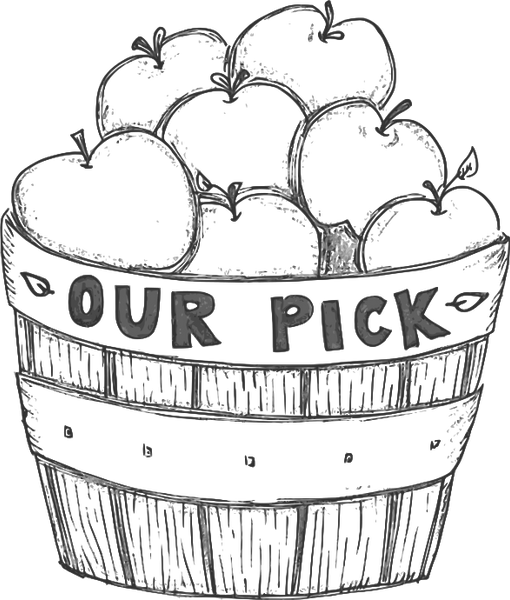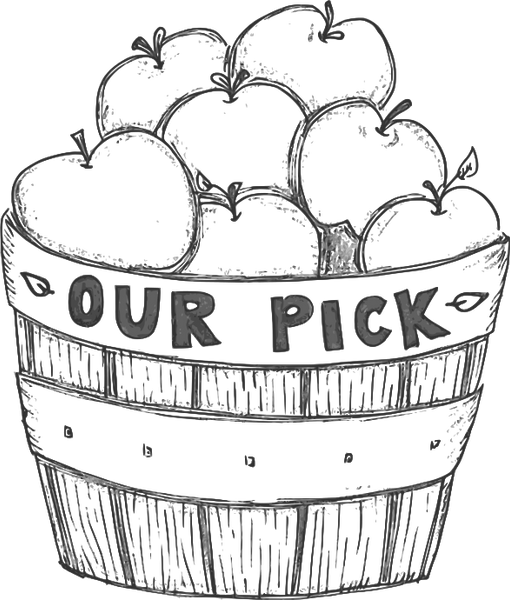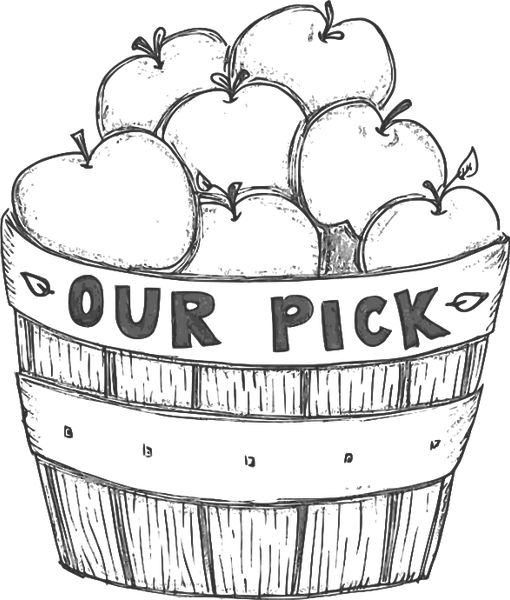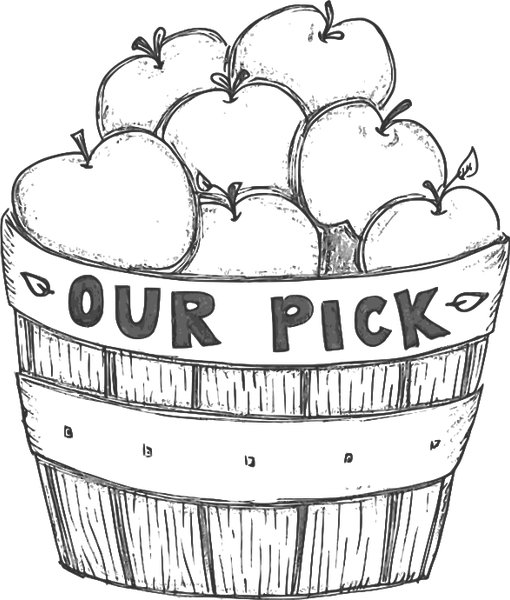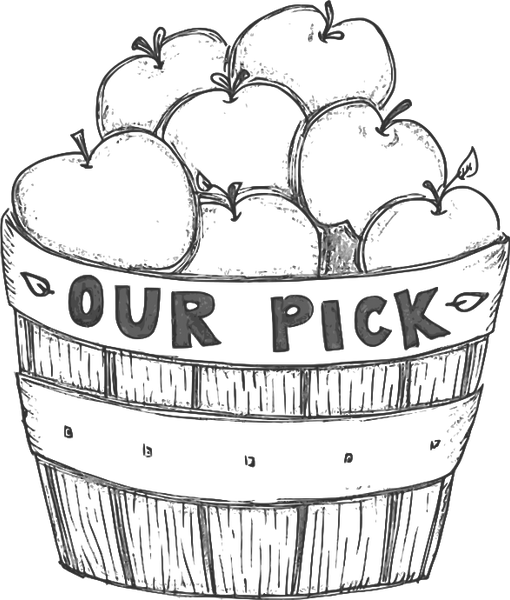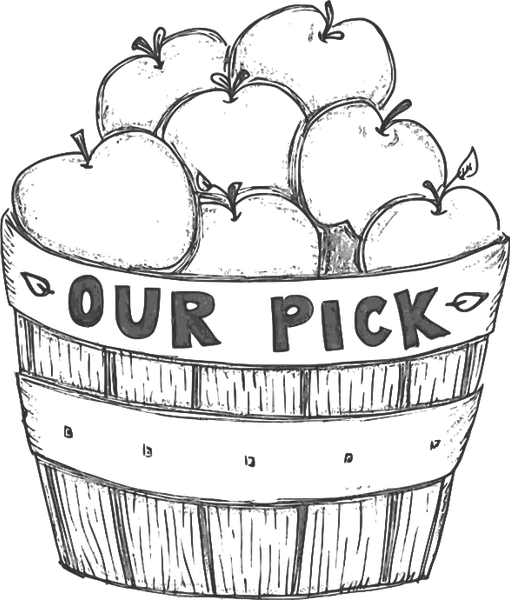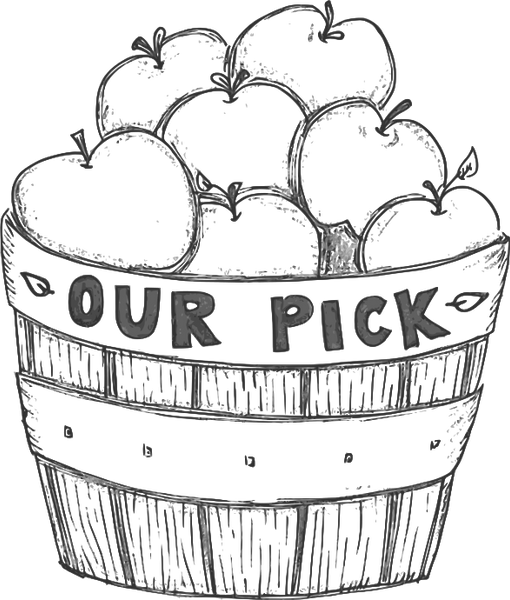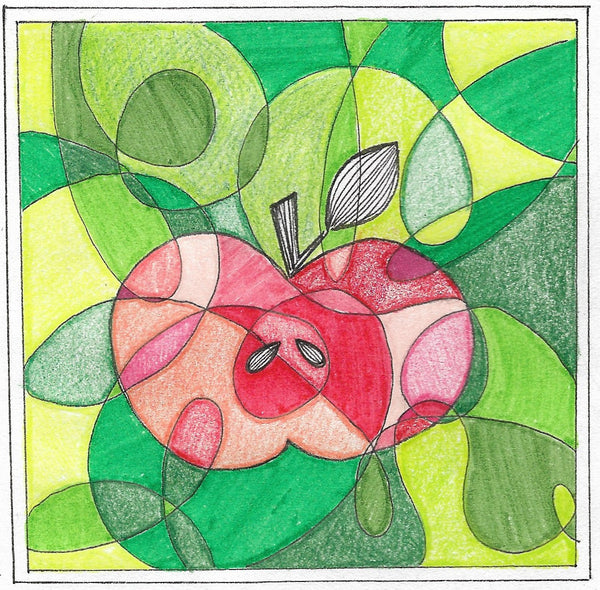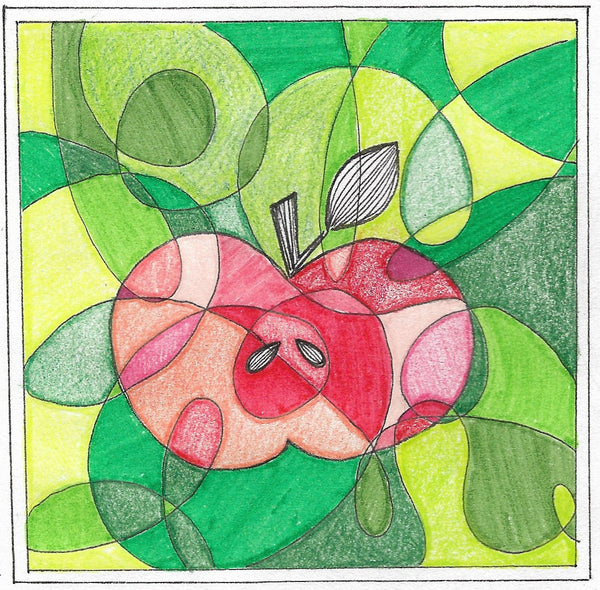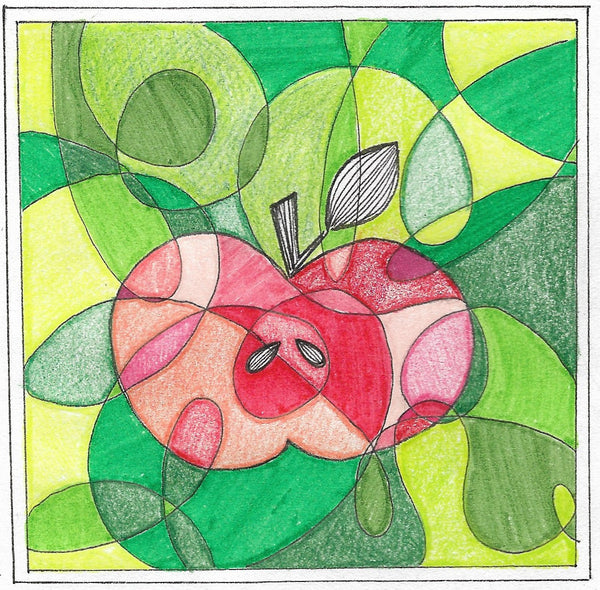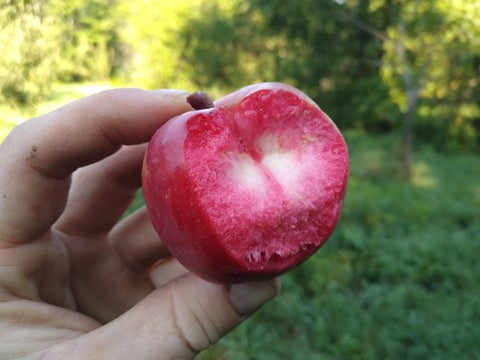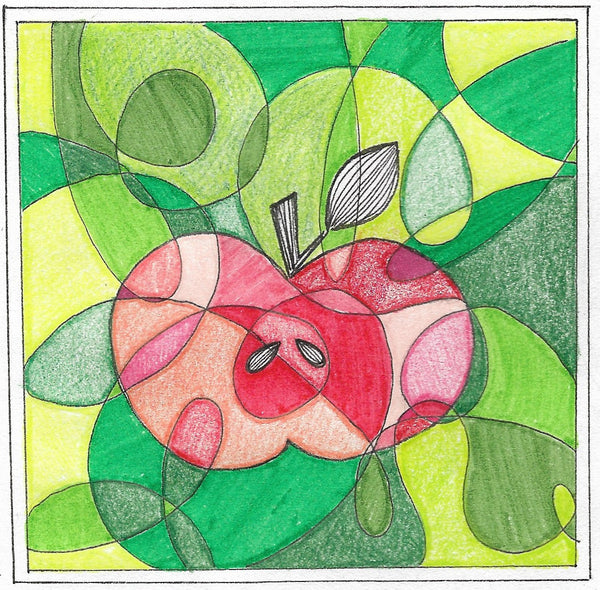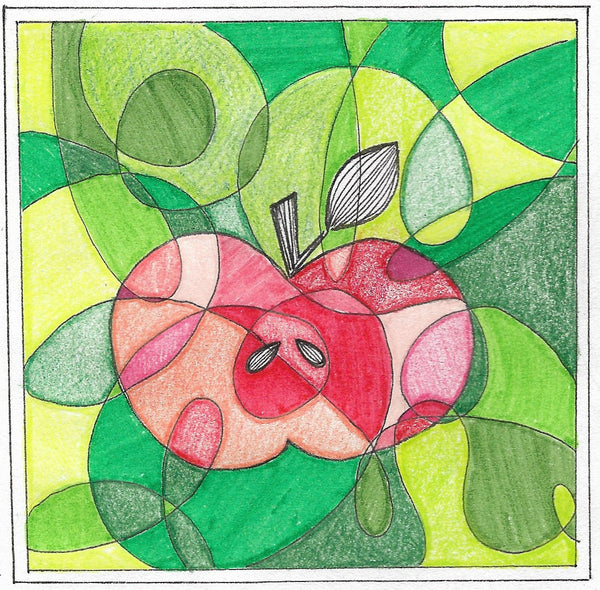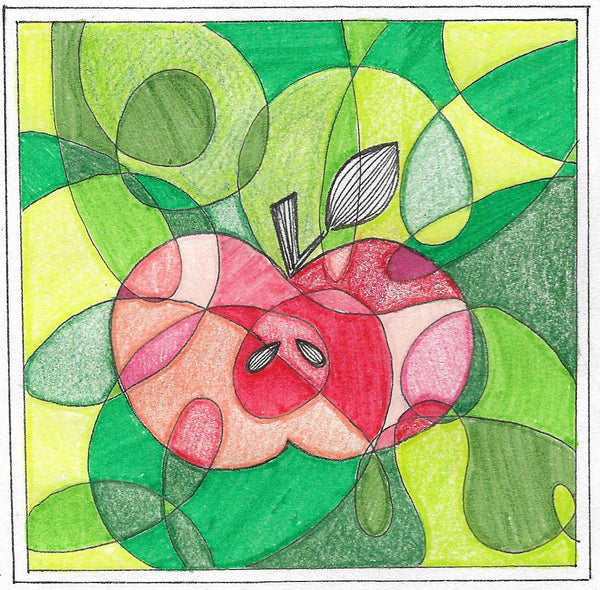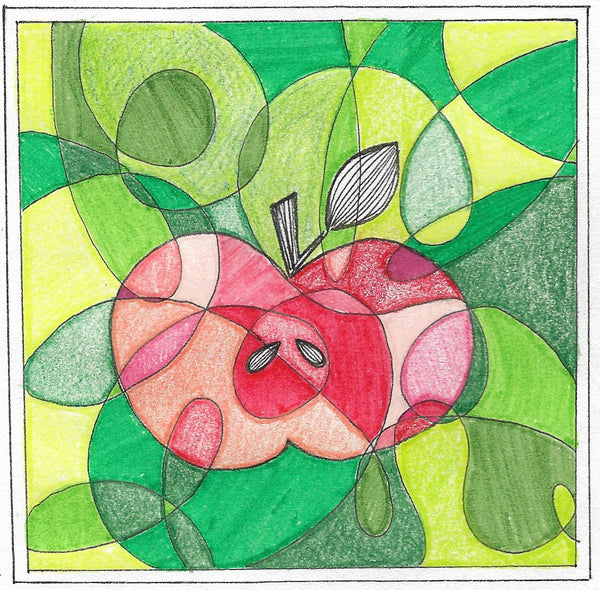Apples
COLD HARDY APPLES: THE BASICS
Our apple trees, like many fruit trees, are propagated by grafting; the process of joining a scion (which becomes the fruiting part, or top of the tree) to a rootstock (which becomes the root of the tree.) Grafting allows the two parts to grow together and function as a single plant. Although the rootstock does have an influence on the ultimate size and hardiness of the tree, the scion alone determines what kind of fruit the tree will yield. Therefore, when we produce fruit trees for northern climates, there are two things to consider: 1) which rootstock to use, and 2) which “cultivars” (cultivated varieties) to graft onto that rootstock. Both must be hardy and vigorous enough to withstand the lowest winter temperatures and grow vigorously during a short season.
- Rootstock -
The rootstock determines the ultimate size of the tree. Generally, there are “standard,” “dwarf” and “semi-dwarf” rootstocks. Choosing one or the other of these rootstocks does not influence the type of fruit yielded by a tree, but for Northern growers it can have a huge effect on how winter-hardy the tree is, how well it grows, and whether it produces a crop. “Dwarf” trees are made by grafting onto rootstocks that are inherently weak growers; they intentionally stunt the growth of the tree. In USDA Zone 3 or 4, the use of a dwarfing rootstock can cause even a hardy cultivar to winterkill or to simply linger season after season with minimal growth and no fruit. If you live in a northern climate with a short growing season, trees with dwarf or semi-dwarf rootstocks are a poor choice. You need a rootstock that will grow robustly for 2-3 months and then start hardening off for winter. We do not grow or sell dwarf or semi-dwarf apple trees, because they do not have the hardiness, vigor, and disease resistance required to truly thrive in our northern climate. For our apple trees we use the seedling Antonovka; an extremely hardy and vigorous “standard” size rootstock which can produce strong growth during our limited growing season. “Standard” means that Antonovka is not a dwarfing rootstock; it will not limit the growth and thus the ultimate size of the tree, rather, it will allow the tree to grow freely to its full size; about 25 feet high if unpruned. For growers in Zones 3 and 4, an apple on Antonovka rootstock will be much hardier, grow more vigorously, and bear fruit sooner (and in greater quantity) than the same apple on dwarfing rootstock. If you wish for a smaller tree, this can be accomplished with pruning. A well-pruned apple tree on Antonovka in Zones 3-4, will be equivalent to a “semi-dwarf” tree in size (10-12 feet at maturity), and it will have many advantages. For instance, your tree will have the vigor to compete with grass that grows near the base of the tree, while a dwarf tree must have “clean culture” (no sod) to the drip line. It will not need to be guyed or staked, whereas dwarf trees tend to be shallow-rooted and usually require some support. Perhaps best of all, your tree may be producing fruit for your great-grandchildren, while dwarf trees must be replanted every 10-20 years. The crop yielded by your mature standard tree will also be many times greater than that of a dwarf or semi-dwarf tree. Finally, because Antonovka is a seedling rootstock (not clonal), you are adding genetic diversity to your orchard; thereby adding valuable disease and pest resistance.
- Cultivars -
We have about 200 varieties of apples listed this year; all of which can be grown in our climate, and each accompanied with a brief description. Usage charts may be found here:
Please also consider the ‘our pick’ option and packages.
- A Word On Disease Resistance -
It’s best to choose your varieties first for vigor and fruit quality, and secondly for disease resistance. Keeping your tree healthy will help it fend off disease. Conversely, any tree that is under stress will be more likely to fall prey to disease, whether or not it is genetically disease resistant. Proper basic care is the best prevention! That said, you will see some apples are described as resistant to Scab, Fireblight, and Cedar Apple Rust. These apples are less susceptible, but not immune(!) to these diseases. Do not pass over a variety simply because it is not “Disease Resistant.” Disease Resistant does not mean “no spray” or “low maintenance.” Insects like disease resistant trees just as much as normal trees.
CHOOSING A SITE FOR YOUR APPLE TREES
Apples prefer light, fertile soils and a south-facing slope if available. Your trees will grow faster on a well drained, sandy loam soil. They will not grow well in wet, heavy clay or pure sand without significant amendment. Another consideration is proximity to your dwelling, especially for fruit trees which require care every year. Will it be “out of sight, out of mind?” You want to avoid that!
- Spacing -
Plant your apple trees 20 feet apart if they are to be kept well-pruned; 25+ feet if they will be allowed to grow to full size.
- Planting -
Get your trees in the ground as soon as you can. Have your holes dug before the trees even arrive if possible. For details on planting, see our Planting Guide (hard copy included with order): www.slngrow.com/pages/full-planting-guide.
- Water -
Each tree should receive 5 to 10 gallons of water per day until the end of May, and the same amount at least two to three times per week until mid-July (August in a dry year). Make sure you have a convenient delivery system!
- Pollination -
Most of the apple cultivars that we offer require a pollinator (an apple of another variety) to produce fruit; unless otherwise indicated in the description. However, even self-fruitful varieties produce better crops with cross-pollination. Don’t stress! Any wild apple or flowering crab within 500 yards will do the trick… and there is almost always a wild apple lurking somewhere nearby. That said, more diversity will always yield heavier crops, so we strongly recommend that the backyard gardener plant more than one apple variety in his/her orchard when possible.
- Fruition -
An apple tree from our nursery, planted in good soil, and maintained adequately by its new owner (rabbit protection, pruning, mulching, manure, attention to pest problems) can be expected to bear fruit in 4-5 years.
